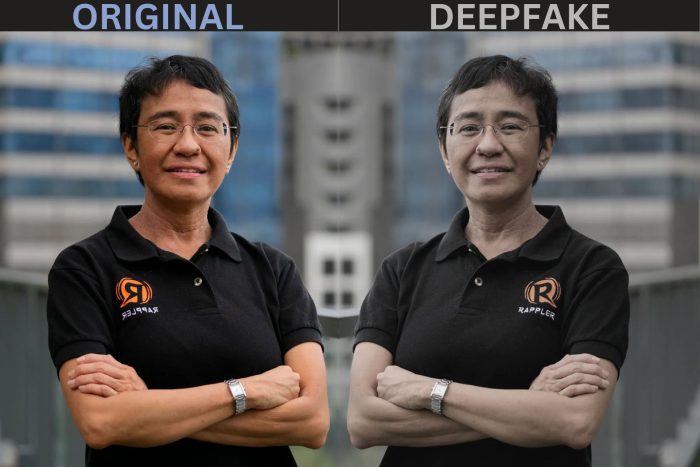A scam network used a deepfake video of Maria Ressa to trick people
Threat actors use fake websites and deepfake content in Microsoft Bing and Facebook Ads
3 min. read
Published on
Read our disclosure page to find out how can you help Windows Report sustain the editorial team Read more

A scam network used a deepfake video of Maria Ressa to promote an automated cryptocurrency trading program. Furthermore, the video appeared on Facebook and Microsoft Bing ads and targeted only the Philippines. On top of that, the scam network published fake articles with clickbait titles on pages similar to Rappler and CNN Philippines.
Fortunately, Microsoft and Meta took down the video and removed the ad. However, the Facebook page Method Business is still active. As a result, you should be careful about the sites you access, especially since they can avoid legal accountability and takedowns.
The deepfake was on a Facebook page named Method Business
The original deepfake video was released on January 25, 2024. Shortly after, the scam network created a fake Facebook page named Method Business. In addition, they used a newly registered domain too.
Besides using Maria Ressa’s identity to gain people’s trust, the threat actors created a webpage similar to Rappler and CNN Philipines. However, some investigation results show that the website is related to over 40 similar ones.
The threat actors also use a variety of media and locations. Thus, it is harder for the investigators to pinpoint a specific one. Additionally, the digital forensic group Qurium claims that the companies say they aren’t responsible for anything related to the deepfake videos and products advertised.
What can we do about deepfake videos?
There isn’t much we can do about deepfake videos besides reporting them whenever we find them. Furthermore, you can save and crop the video. Afterward, check if the mouth of the person is in sync with the audio. In addition, verify thoroughly your sources.
This way, you will be ready when you come across a deepfake video. See the differences between an original and a fake video using the following side-by-side comparison.
Fortunately, tech giants like Microsoft and Meta know about deepfake content. So, they are working on ways to fix the problem. Unfortunately, threat actors use Meta and Microsoft as tools to spread malicious content. So, it is up to us to report whatever we find suspicious. By the way, always be careful, as deepfake video scams get better.
If you are interested, learn more about Maria Ressa’s case directly from Rappler. Furthermore, here is another article about threat actors using Facebook ads.
What are your thoughts? Did you ever encounter a deepfake video? Let us know in the comments.








